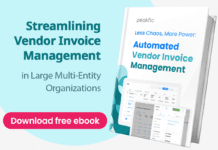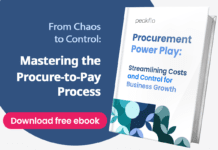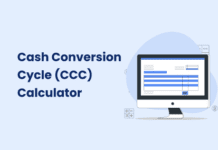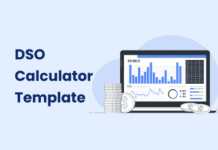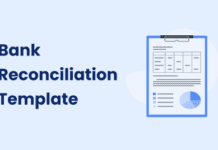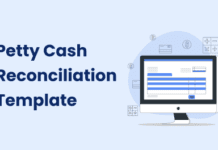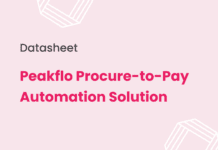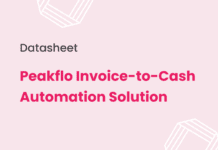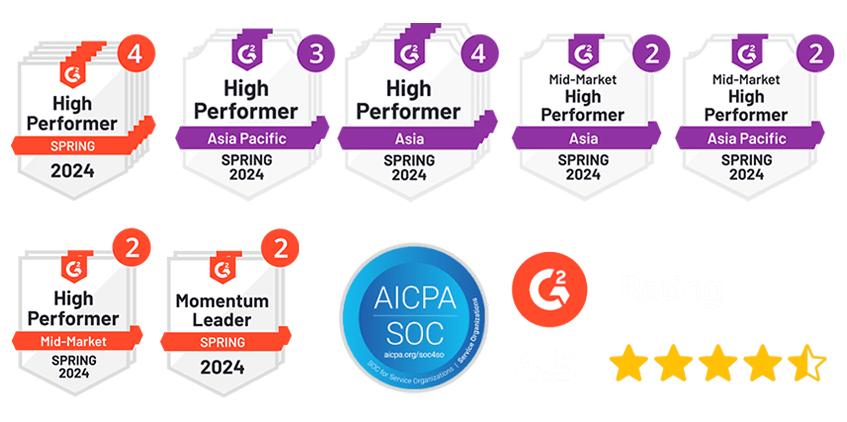Manual invoice processing can be a nightmare for finance teams. These traditional methods drain resources and create bottlenecks that slow down entire financial operations. AI invoice automation is delivering measurable results that address these long-standing challenges head-on.
The numbers tell a clear story about current adoption. In 2024, 35% of global companies are already using AI, with approximately half of businesses planning to incorporate AI into their processes this year. This rapid adoption makes sense when you consider the problems: traditional invoice processing takes an average of 20+ days to complete a single invoice, and nearly 1 in 5 invoices contain errors due to manual data entry.
The financial impact is substantial. Organizations implementing AI invoice processing see dramatic improvements across key metrics. Processing time drops from 17.9 days to just 3.4 days, while users typically experience 60-80% reductions in time spent on invoice processing tasks. The cost benefits are equally impressive—the average cost of processing a single invoice can decrease from $10.18 to as little as $2.14, representing a 79% reduction.
Companies following best practices achieve even better results, with invoice processing costs of $5 or less per invoice, significantly below the industry average of $12. These aren’t theoretical projections—they’re real outcomes from businesses that have implemented AI invoice automation systems.
Finance teams facing pressure to improve efficiency while reducing costs are finding that AI invoice automation provides a practical solution. Rather than being experimental technology, these systems have proven their value through measurable improvements in speed, accuracy, and cost reduction.
What is AI Invoice Automation and Why It Matters in 2025
Traditional invoice processing methods are creating bottlenecks that finance teams can no longer afford. AI invoice automation uses artificial intelligence to handle the complete invoice lifecycle without requiring manual intervention at each step.
This technology goes beyond simple digitization. AI invoice automation manages everything from initial document capture through final payment processing, learning from each transaction to improve accuracy and speed. The system handles data extraction, validation, approval routing, and integration with existing accounts payable operations automatically.
Why does this matter for your business in 2025? Finance departments are under increasing pressure to process higher volumes of invoices while maintaining accuracy and controlling costs. Manual processes that worked for smaller operations become unsustainable as businesses grow. AI invoice automation addresses these challenges by handling routine tasks that typically consume hours of staff time daily.
The technology has matured beyond experimental implementations. Businesses using these systems report concrete improvements in processing speed, error reduction, and cost control. For finance managers evaluating solutions, AI invoice automation represents a practical approach to scaling operations without proportionally increasing headcount or operational complexity.
The shift from manual to AI-powered invoice processing
Finance departments have struggled with manual invoice processing bottlenecks for years. The problems run deeper than just slow processing times. 61% of late invoice payments in the U.S. stem from simple invoicing errors, creating damaged vendor relationships and unnecessary friction across organizations.
Companies still using manual or semi-manual processes pay a steep price. These organizations spend an average of $15.00 per invoice, compared to just $1.83 for those using advanced automation solutions—a 70% cost reduction that directly impacts the bottom line.
What’s driving the rapid adoption? The shift is accelerating faster than many expected. Manual invoice entry into ERP and accounting systems dropped from 85% to just 60% in a single year. Industry forecasts predict that 80% of companies will implement AI-powered automation in their financial processes by 2025.
Market growth reflects this momentum. The AI in the finance market is expected to reach $26.67 billion by 2025, with a compound annual growth rate of 40.8%. The invoice automation software market shows similar expansion, projected to grow from $2.87 billion in 2023 to $8.91 billion by 2031.
This isn’t just a technology trend—it’s a fundamental change in how finance operations work. Companies are moving away from manual processes because the business case has become too compelling to ignore.
Key differences between traditional and AI invoice workflows
The contrast between traditional and AI-powered invoice processing extends far beyond simple speed improvements. These fundamental differences show why finance teams are making the switch:
1. Data capture and extraction. Traditional methods rely on manual data entry from paper documents, creating bottlenecks and introducing human error. AI uses advanced OCR and NLP to automatically extract information from any format, with accuracy rates reaching the high 90% range. This means your team can process invoices from emails, PDFs, or scanned documents without manual intervention.
2. Validation and matching. Manual processes involve tedious cross-checking against purchase orders, a time-consuming task prone to oversight. AI performs intelligent validation instantly, handling complex multiway matching with greater efficiency and accuracy. The system can simultaneously verify quantities, prices, and vendor details across multiple documents.
3. Approval workflowsTraditional approvals create significant bottlenecks, with 60% of invoices requiring two or more approvals and 20% requiring three or more. AI systems route invoices automatically based on business rules and learned patterns, dramatically accelerating the approval process while maintaining proper controls.
4. Learning capability Perhaps most importantly, AI continuously improves over time. Unlike traditional methods that rely heavily on manual processing, AI invoice automation learns from every invoice it processes. This allows the system to handle increasingly complex scenarios without human intervention.
Research from Forrester shows AI is delivering significant value across six key areas of accounts payable: invoice data capture, invoice matching, reporting and dashboarding, fraud management, payment management, and e-invoicing and tax compliance.
The adoption numbers support this shift. By the end of 2024, approximately 74% of all AP departments were expected to be using AI in some form, with 36% of finance leaders already using AI for accounts payable tasks and another 24% planning to implement it within the next 12 months.
Core Technologies Behind AI Invoice Processing
What makes AI invoice automation work? Four core technologies work together to handle the entire invoice lifecycle. Understanding how these components interact helps finance teams appreciate the power behind modern automation systems.
Optical Character Recognition (OCR)
OCR technology serves as the foundation for AI invoice processing, converting printed or digital invoices into machine-readable text. Modern OCR engines scan invoice images, identify text characters, numbers, and symbols, and extract relevant information such as vendor names, invoice numbers, line items, and dates. This extracted data is subsequently processed by other AI components to enhance accuracy and validation.
Advanced OCR systems handle diverse invoice formats, from scanned paper documents to digital PDFs, creating a standardized foundation for further processing. The technology adapts to different fonts, layouts, and document qualities, ensuring consistent data capture regardless of the invoice source.
Machine Learning (ML)
Machine learning enables AI invoice systems to evolve beyond static rules by learning from historical invoice data. These algorithms identify patterns, adapt to diverse invoice formats, and make accurate predictions for data extraction, validation, and classification tasks. The system continuously improves its accuracy as it processes more invoices, reducing the need for manual intervention over time.
For instance, when encountering a line item like “Annual subscription – Enterprise plan,” ML algorithms automatically categorize it as a software expense based on previous patterns. This learning capability means the system becomes more accurate and efficient with each processed invoice.
Natural Language Processing (NLP)
NLP works alongside OCR to interpret the meaning behind extracted text. Through this technology, AI systems understand context, grasp meaning from unstructured data, and process various languages. NLP performs crucial tasks including tokenization, part-of-speech tagging, named entity recognition, and semantic analysis.
When NLP encounters notes like “Net 30, 2% discount if paid within 10 days,” it correctly interprets these payment terms and flags them appropriately. This contextual understanding allows for handling diverse invoice formats, languages, and writing styles with remarkable precision.
Robotic Process Automation (RPA)
RPA completes the technology stack by orchestrating the end-to-end workflow once data has been extracted and interpreted. These software “bots” automate repetitive, rule-based tasks throughout the invoice lifecycle, including:
- Routing invoices to appropriate approvers based on predefined criteria
- Performing three-way matching between invoices, purchase orders, and goods receipts
- Updating ERP and accounting systems in real-time
- Generating reports and maintaining audit trails
RPA bots work continuously, following programmed instructions with speed and accuracy that surpass human capabilities. When combined with OCR, ML, and NLP, RPA creates a complete automation pipeline that handles everything from invoice receipt to payment.
These four technologies form the backbone of modern AI invoice automation systems, dramatically reducing processing time, minimizing errors, and freeing financial teams to focus on higher-value activities.
How AI Invoice Automation Works Step-by-Step
Finance teams need to understand the mechanics before implementing AI invoice automation. The process that delivers 80% time savings on invoice processing involves five distinct stages that work together seamlessly.
1. Invoice capture and digitization
AI systems begin by collecting invoices from multiple sources—emails, PDFs, scanned documents, vendor portals, or handwritten formats. These diverse inputs get consolidated into a single digital platform, ensuring nothing gets missed. Optical Character Recognition (OCR) technology converts different document types into machine-readable text. This foundational step transforms unstructured invoice images into structured data ready for the next stage.
2. Data extraction and interpretation
The system applies Intelligent Document Processing to extract key details: invoice numbers, vendor names, dates, line items, and totals. Natural Language Processing (NLP) enables the system to understand context and interpret invoice descriptions accurately. Modern AI goes beyond simple text recognition—it comprehends relationships between different information pieces, distinguishing line items from taxes and linking invoice details with corresponding purchase orders.
3. Validation and 2/3-way matching
Automatic validation checks cross-reference extracted data with historical records, predefined rules, and existing databases to ensure accuracy. The system conducts 2-way or 3-way matching between invoices, purchase orders, and goods receipts, automatically verifying quantity, pricing, and approval limits. Advanced systems perform over 80 compliance checks, alerting accountants to potential issues before they become problems.
4. Approval routing and exception handling
AI maps approval hierarchies based on invoice value, project codes, and approver workload. Intelligent routing sends invoices to appropriate approvers based on predefined rules, issues reminder notifications, and reassigns approvals when stakeholders are unavailable. Exception handling includes dedicated workflows where AI analyzes discrepancy root causes and either self-corrects or routes issues to designated personnel for review.
5. Integration with accounting systems
The validated and approved invoice data automatically transfers to the organization’s accounting software or ERP system. This integration eliminates manual data entry, reduces error risk, and accelerates the financial close process. The result is real-time visibility into invoice processing status and payment schedules across the organization.
Real-World Use Cases and Results from AI Invoice Automation
Companies implementing AI invoice automation are seeing immediate, measurable improvements in their accounts payable operations. These real-world examples show exactly how businesses are achieving the time savings and cost reductions discussed earlier.
Case study: Mid-sized agency saves 6+ hours/week
One finance team faced a common challenge—they were drowning in manual invoice processing work. None of their invoices had associated purchase orders, making coding particularly time-consuming. Their existing tools weren’t helping, so they decided to implement an AI solution.
The results were remarkable: in just one two-week period, 76% of the company’s 1,100 invoices were automatically assigned correct GL codes. This improvement allowed their finance team to handle only a fraction of invoices manually, saving over 6 hours weekly.
Similar results appear across different industries. A company reduced invoice processing time by 70%—from 3 minutes to under 1 minute per invoice—freeing over 332 hours monthly. Another company achieved a 70% reduction in processing time, with 53% of invoices handled without human involvement.
How AI flags duplicates and errors automatically
Invoice fraud creates serious financial risks for businesses. Companies encounter an average of 13 fraud attempts annually, with about 9 cases of successful fraud per company, costing organizations approximately $133,000 per incident.
AI systems address this challenge by scanning every transaction against all previous transactions. The technology identifies suspicious patterns, duplicate line items across multiple invoices, and anomalous billing behaviors—tasks that would be virtually impossible through manual spot checks. The system becomes more effective over time, learning from each exception to minimize future errors.
Examples of automated GL coding and approvals
What happens with non-PO invoices? AI analyzes historical coding patterns to suggest appropriate GL codes and accounting dimensions. An AI system gathers invoices from diverse sources like emails and supplier portals, then applies AI-driven algorithms to assign proper GL codes based on pre-defined business rules and past trends.
Key Benefits of AI Invoice Automation in 2025
Understanding the specific advantages of AI invoice automation helps finance professionals make informed implementation decisions. These systems deliver measurable improvements across multiple areas of accounts payable operations.
80% time savings on invoice processing
AI-powered invoice automation enables businesses to process invoices up to 80% faster. Tasks that previously required up to 3 minutes per invoice can now be completed in under 30 seconds. Your AP department can handle 6x more invoices simultaneously without increasing staff, while processing costs drop by up to 70%.
Accuracy improvements and fraud prevention
AI invoice systems achieve up to 98% extraction accuracy, reducing error rates by up to 90%. These systems provide advanced fraud detection capabilities, identifying irregular patterns and flagging potential duplicate payments before money leaves your business. The technology continuously analyzes transactions, catching suspicious activities that manual spot checks would miss.
Stronger vendor partnerships and compliance management
Prompt, accurate payments strengthen vendor relationships, often resulting in better service levels and terms. AI systems ensure adherence to company policies through automated compliance checks, helping you avoid fines while maintaining accurate records and audit trails.
Enhanced financial visibility and reporting
AI delivers real-time insights into invoice processing speed, bottlenecks, and approval delays. This visibility enables better cash flow forecasting, spending analytics, and immediate visibility into accounts payable status, empowering your finance team to make data-driven decisions.
Managing invoice automation requires a proactive approach. These benefits demonstrate why finance teams are adopting AI solutions to streamline operations and reduce manual workload.
Peakflo AI Invoice Processing Software
Peakflo’s AI Invoice Processing Software is built to take the manual grind out of accounts payable. With advanced AI and OCR capabilities, the software automatically captures, reads, and validates invoice data—no more data entry, chasing approvals, or sorting through emails. It matches invoices with POs and GRNs, flags mismatches, applies tolerance thresholds, and routes them through customizable approval workflows.
Whether you’re processing hundreds or thousands of invoices across multiple entities, Peakflo ensures speed, accuracy, and compliance. It supports multi-language, multi-currency invoices and integrates seamlessly with your ERP, helping your finance team close books faster, reduce errors, and save hours every week.
The best part? Finance teams can finally shift focus from tedious admin work to high-value tasks like cash flow analysis, budgeting, and strategic planning.
Try out AI invoice processing solutions today to see how automation can eliminate the manual bottlenecks that drain your resources and discover the substantial savings waiting in your accounts payable process.
A Way Forward
AI invoice automation addresses real challenges finance teams face daily. Manual processing creates bottlenecks, errors pile up, and resources get wasted on tasks that technology can handle more effectively. Companies implementing these systems see measurable improvements in processing speed, cost reduction, and accuracy—results that directly impact business operations.
Organizations across industries have proven the effectiveness of AI invoice automation. Whether you’re dealing with high invoice volumes or complex approval workflows, the technology adapts to your specific requirements. The key lies in understanding your current pain points and implementing solutions that address your most pressing challenges.
Finance teams can focus on strategic activities rather than manual data entry when AI handles routine processing tasks. Vendor relationships improve through consistent, timely payments. Real-time visibility into spending patterns enables better decision-making. These benefits compound over time, creating lasting operational improvements.
AI invoice automation represents a practical solution for businesses seeking to optimize their accounts payable processes. The measurable outcomes—reduced processing time, lower costs, improved accuracy, and enhanced compliance—make a compelling case for adoption. Companies implementing these systems position themselves for sustained efficiency gains and competitive advantages in their financial operations.
FAQs
Q1. How can AI invoice automation reduce processing time?
AI invoice automation can reduce processing time by up to 80%. Tasks that previously took 3 minutes per invoice can now be completed in under 30 seconds, allowing AP departments to handle 6 times more invoices without increasing staff.
Q2. What are the key technologies behind AI invoice processing?
The core technologies behind AI invoice processing include Optical Character Recognition (OCR) for data capture, Machine Learning (ML) for pattern recognition, Natural Language Processing (NLP) for context understanding, and Robotic Process Automation (RPA) for workflow orchestration.
Q3. How does AI invoice automation improve accuracy and reduce errors?
AI invoice systems can achieve up to 98% extraction accuracy, reducing error rates by up to 90%. These systems also provide advanced fraud detection capabilities, identifying irregular patterns and flagging potential duplicate payments before they occur.
Q4. What are the financial benefits of implementing AI invoice automation?
Implementing AI invoice automation can reduce processing costs by up to 70%. The average cost per invoice can drop from over $10 to around $2, resulting in significant cost savings for businesses.
Q5. How does AI invoice automation impact vendor relationships?
AI invoice automation improves vendor relationships by ensuring prompt and accurate payments. This often results in better service levels and terms from vendors. Additionally, the system’s compliance checks help maintain accurate records and audit trails, further strengthening business relationships.

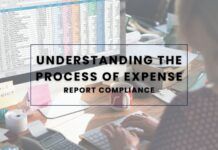







![Why AI Sales Calls Are Making Good Sales Reps Even Better [2025 Guide] ai sales calls](https://cdn-kmjmp.nitrocdn.com/YvtqmrsiHUxqerlSiZgbfzqqTARWTElr/assets/images/optimized/rev-834053b/blog.peakflo.co/wp-content/uploads/2025/09/65168cf6-3001-4733-8cbc-12d5684cf449-218x150.webp)







